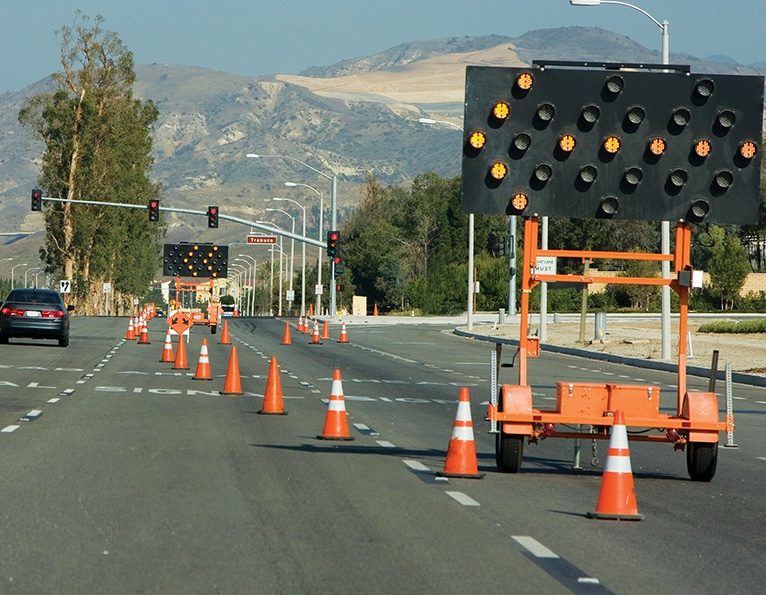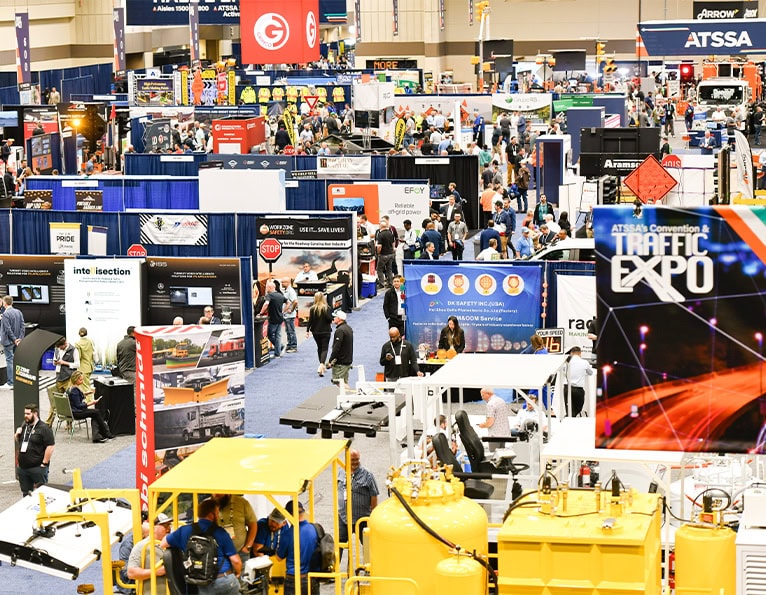Latest updates
TRIP report estimates $1.9 trillion in societal harm from fatal and serious traffic crashes in 2022
TRIP, a national transportation research nonprofit, this morning released a report showing that the high number of traffic fatalities and serious-injury crashes over the past three years took a significant toll on the nation in both lives lost and economic costs. Utilizing data from a 2023 National Highway Traffic Safety Administration NHTSA report, TRIP estimated that fatal and serious traffic crashes in the U.S. in 2022 caused a total of $1.9 trillion in “societal harm,” including $465 billion in economic costs and $1.4 trillion in quality-of-life costs. TRIP, a national transportation research nonprofit, this morning released a report showing that the high number of traffic fatalities and serious-injury crashes over the past three years took a significant toll on the nation in both lives lost and economic costs. Utilizing data from a 2023 National Highway Traffic Safety Administration NHTSA report, TRIP estimated that fatal and serious traffic crashes in the U.S. in 2022 caused a total of $1.9 trillion in “societal harm,” including $465 billion in economic costs and $1.4 trillion in quality-of-life costs. The NHTSA report showed the economic costs from traffic crashes include “medical care, lost productivity, legal and court costs, insurance administrative costs, workplace costs, congestion impacts travel delay, excess fuel consumption and pollution, emergency services, and property damage,” according to TRIP’s analysis, “Addressing America’s Traffic Safety Crisis: Examining the Causes of Increasing U.S. Traffic Fatalities and Identifying Solutions to Improve Road User Safety.” NHTSA’s report also estimated “quality-of-life costs” from things such as loss of remaining lifespan, extended or lifelong physical impairment, or physical pain. The TRIP report shows that traffic fatalities increased 19% from 2019 to 2022 even though vehicle miles traveled VMT decreased dramatically in 2020 as the country worked to slow the spread of COVID-19 from 3,261,772 in 2019 to 2,903,622 in 2020. In 2022, VMT still had not reached the pre-pandemic level, the TRIP report noted. Traffic fatalities rose from 36,096 in 2019, to 38,824 in 2020, to 42,939 in 2021, before declining to 42,795 in 2022, the report shows. Today’s report notes that the “significant increase in traffic fatalities since the onset of the pandemic appears largely related to increased risks being taken by drivers.” It mentions several factors seen as contributing to the high number of traffic fatalities, including speeding, failing to wear seatbelts and driving under the influence of alcohol or drugs. Driver distraction is also a factor, with NHTSA seeing a 13% increase in distracted-affected traffic crashes between 2019 and 2021. “Saving lives on our nation’s roadways requires teamwork – from the drivers who travel our roads to the governments that fund road work to the manufacturers, contractors and innovators involved. We must all commit to doing our part to reduce the loss of life and serious injuries on American roadways that cost an estimated $1.9 trillion last year and inflicted never-ending pain on families,” said Jeff Johnson, chairman of the Board of Directors of the American Traffic Safety Services Association ATSSA. “For our part, at ATSSA, we will not rest until we achieve the goal of zero deaths on U.S. roadways.” According to TRIP, “safety at highway work zones can be improved by implementing a comprehensive work zone safety strategy that includes ensuring a proper work zone layout; prioritizing work zone safety training; ensuring the use of high visibility safety apparel and appropriate traffic control devices; creating an internal traffic control plan; and implementing strategies to reduce aggressive driving.”
ATSSA releases connected arrow board benefits resource
Connected arrow boards offer several advantages for work zone safety, a message ATSSA is helping spread through a new one-page flyer available for free download. The Iowa Department of Transportation IowaDOT has required the use of connected arrow boards on all interstate and state highway projects since 2022 as reported in a feature about smart arrow boards in Roadway Safety magazine. The Connected Arrow Boards flyer was created by the Work Zone ITS Subcommittee of ATSSA’s Temporary Traffic Control TTC Committee and approved by the full committee at its February meeting. It notes that more than 3,000 connected arrow boards are already in use on roads and lists seven benefits of the devices. Connected arrow boards offer several advantages for work zone safety, a message ATSSA is helping spread through a new one-page flyer available for free download. The Iowa Department of Transportation IowaDOT has required the use of connected arrow boards on all interstate and state highway projects since 2022 as reported in a feature about smart arrow boards in Roadway Safety magazine. The Connected Arrow Boards flyer was created by the Work Zone ITS Subcommittee of ATSSA’s Temporary Traffic Control TTC Committee and approved by the full committee at its February meeting. It notes that more than 3,000 connected arrow boards are already in use on roads and lists seven benefits of the devices: Know where lane closures are in real time. Alert drivers of which way to merge. Reduce crashes before a closure/taper. Log when lane closures happened. Add to any existing equipment in less than an hour. Nothing new to learn for field personnel. Real-time data using Work Zone Data Exchange WZDx protocols for active lane closures. “We believe this new resource will be helpful in raising awareness of the value of these safety devices for roadway work zones,” said ATSSA’s Innovation & Technical Services Manager Melodie Matout. “Our hope is that our members and roadway safety partners will utilize it to spread the word to decision makers in companies, departments of transportation and legislators. The goal, of course, is to utilize every tool possible to help save lives in roadway work zones – the lives of both workers and the traveling public.” In 2021, 956 people were killed and an estimated 42,000 were injured in roughly 106,000 work zone crashes nationwide, according to the National Work Zone Safety Information Clearinghouse. Each year, the majority of people killed in work zone crashes are drivers and their passengers.
ATSSA Worker Protection Toolkit now available
ATSSA now offers a Worker Protection Toolkit that will help the industry prevent roadway worker injuries and be equipped to respond in case of an injury or death. “The overarching goal is to protect the lives of roadway workers,” said ATSSA Vice President of Member Services Donna Clark. “That is why this toolkit was designed to provide assistance in properly training workers. We recognize, however, that tragedies can occur so we also provide a roadmap for employers in case the worst happens.” The Worker Protection Toolkit is the result of efforts by the Roadway Worker Protection Council. The RWP Council grew out of a Roadway Worker Protection Summit held during ATSSA’s 2021 Convention & Traffic Expo. ATSSA now offers a Worker Protection Toolkit that will help the industry prevent roadway worker injuries and be equipped to respond in case of an injury or death. “The overarching goal is to protect the lives of roadway workers,” said ATSSA Vice President of Member Services Donna Clark. “That is why this toolkit was designed to provide assistance in properly training workers. We recognize, however, that tragedies can occur so we also provide a roadmap for employers in case the worst happens.” The Worker Protection Toolkit is the result of efforts by the Roadway Worker Protection Council. The RWP Council grew out of a Roadway Worker Protection Summit held during ATSSA’s 2021 Convention & Traffic Expo. The Toolkit is free to ATSSA members via digital download and available for online purchase by non-members. It currently includes six documents but is expected to expand as the RWP Council continues its work. Documents currently include: Work Zone Training and Resource Guide – Excel chart for tracking the training of eight categories of employees: flagger, flagger instructor trainer FIT, traffic control technician TCT, traffic control supervisor TCS, pavement marking technician PMT, guardrail installer, utility operations and truck-mounted attenuator operator TMA. Work Zone Terminology for New Employees – 12-page document with color images and illustrations designed for new employees and traffic control technicians. Incident Investigation Checklists – 11 pages of checklists and incident reports designed for crews/employees and managers/owners Emergency Response Management – Checklist designed for management to use as an emergency response resource Emergency Response Additional recommendations – Checklist of recommendations for management Emergency Scene Response Field Document – Steps for workers or management to use out in the field in an emergency situation The checklists will be used to create an online training module that is expected to be developed next year. The toolkit was unanimously approved during the Council’s Feb. 20 meeting at the Annual Convention & Traffic Expo in Phoenix. The Worker Protection Toolkit and the work of the RWP Council are detailed in the Spring Issue of Roadway Safety magazine.
Upcoming Events
Midyear Meeting 2025
Join us Aug. 19-22, 2025, in Milwaukee, Wis., for the Midyear Meeting. ATSSA members hold committee & council meetings, discuss industry issues & advance roadway safety.
2026 Convention & Traffic Expo
Where Roadway Safety + Innovation Intersect. ATSSA’s 56th Annual Convention & Traffic Expo is Feb. 20-24, 2026, in Houston, Texas. Join key roadway safety and transportation professionals at this premier event.
Visit ATSSA at booth #EH2316 during Utility Expo 2025 in Louisville.
TOOLS & RESOURCES
Easily find content, tools or products in the Resource Library. Search industry, legal and volunteer resources; products, toolkits and publications for industry professionals, past webinars and more. Get the ATSSA Worker Protection Toolkit for resources on incident response and prevention.
ATSSA Community
As a member of ATSSA, you become part of a vibrant community made up of thousands of roadway safety infrastructure professionals. Explore ways of connecting with your professional community through chapters and volunteer leadership and access quick links to the most popular member resources.
Innovation and Technical Services
ATSSA is dedicated to being a reliable and accurate source of innovative technology information for all members. As the industry moves towards an automated and more technologically advanced future, prepare and learn from best practices and resources related to traffic safety topics and technical services.
North America’s top roadway safety event
Join thousands of roadway safety and transportation professionals at ATSSA’s 56th Annual Convention & Traffic Expo, Feb. 20-24, 2026, in Houston, Texas. Connect with industry leaders, explore the latest safety solutions and drive innovation.
ATSSA's Core purpose is to advance roadway safety
ATSSA members embrace the goal of eliminating roadway fatalities through the design, manufacture and installation of road safety and traffic control devices. For more than 50 years, ATSSA’s training has been recognized as the highest quality roadway safety training program available. Get top training for your team.





